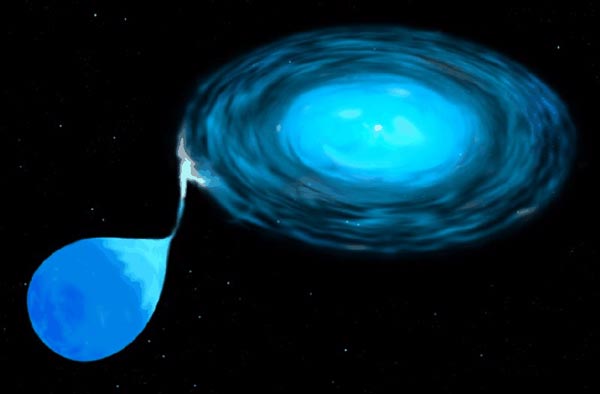Accretion Disk Binary System

Explanation:
Our
Sun
is unusual in that it is alone - most
stars occur in multiple or
binary systems.
In a binary system, the
higher mass star will evolve faster and will eventually
become a compact object - either a
white dwarf star, a
neutron star, or
black hole.
When the lower mass star later
evolves into an expansion phase,
it may be so close to the compact star that its
outer atmosphere actually falls
onto the compact star.
Such is the case
diagrammed above. Here
gas from a blue
giant star is
shown being stripped away into an
accretion disk around its compact binary
companion.
Gas in the
accretion disk swirls around, heats up, and
eventually falls onto the compact star.
Extreme conditions frequently occur on the surface
of the compact star as gas falls in, many times
causing detectable
X-rays,
gamma-rays, or even
cataclysmic novae explosions.
Studying the extreme conditions in these
systems tells us about the inner properties
of ordinary matter around us.
Authors & editors:
Robert Nemiroff
(MTU) &
Jerry Bonnell
(USRA)
NASA Web Site Statements, Warnings,
and Disclaimers
NASA Official: Jay Norris.
Specific
rights apply.
A service of:
LHEA at
NASA /
GSFC
& Michigan Tech. U.

